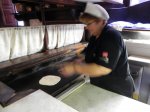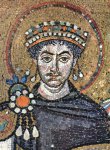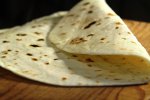Frank Gerace
10+ Posts
Ravenna is the capital city of the Province of Ravenna in the Emilia-Romagna region of Italy. Known in Roman times as Classe, the city was a port for the large naval fleet of the Roman Empire. Ravenna became the capital of the Western Roman Empire in 402 under Honorius, because of its fine harbour on the Adriatic and its ideal defensive location surrounded by impassable marshes.
The sister of Honorius, Galla Placidia, lived in Ravenna in the first half of the 5th century, and made it a centre of Christian art and culture. The city remained the capital of the Empire until 476 when the emperor Romulus Augustulus wqas deposed and the Western Roman Empire was dissolved. With the end of war between the Romans and the Goths, Ravenna entered into a period of prosperity and influence. when it became the capital of Odoacer, and then of the Ostrogoths under Theodoric the Great.
Ravenna then served as the capital of the Kingdom of the Ostrogoths until it was re-conquered in 540 by the Eastern Roman Empire, the Byzantines. This is when it was taken by Belisarius for the Byzantine emperor Justinian who turned Ravenna into the westernmost point of the Byzantine Empire. Much of the beautiful mosaic art in Ravenna’s churches dates from this period.. Theodoric, the illiterate “barbarian”, maintained Western civilization and Ravenna was a source of the light of culture and art during Europe's Dark Ages.
Afterwards, the city continued its role of Western curator, until the invasion of the Franks in 751, after which it became the seat of the Kingdom of the Lombards. Its history after this period was one of decline and stagnation. After 1441 it was under Venetian and then papal rule.
We encountered Ravenna history in the restaurant Ca De Ven, located in the Palazzo Rasponi, a building first mentioned as already existing in a legal document of June 22 of 1397. We also know that after passing from one noble family to another, in 1704 the building became an inn. The next two hundred years saw a succession of abuses and reforms of the 14th century building. In 1975 the founding of Ca De Ven brings the glorious old structure in good hands.
In this space so evocative of the Romagnolo past, the piadina has a place of honor. The piadina is an unleavened flatbread, similar and probably related to that of the Middle East, given the Adriatic coast,s long Byzantine history. For many years, this flatbread was considered a peasant’s meal because of the simple and easy to find ingredients. However, now it is a living cultural emblem that is the fast food of the region, found in little shops in the streets of cities all over Emilia Romagna.



